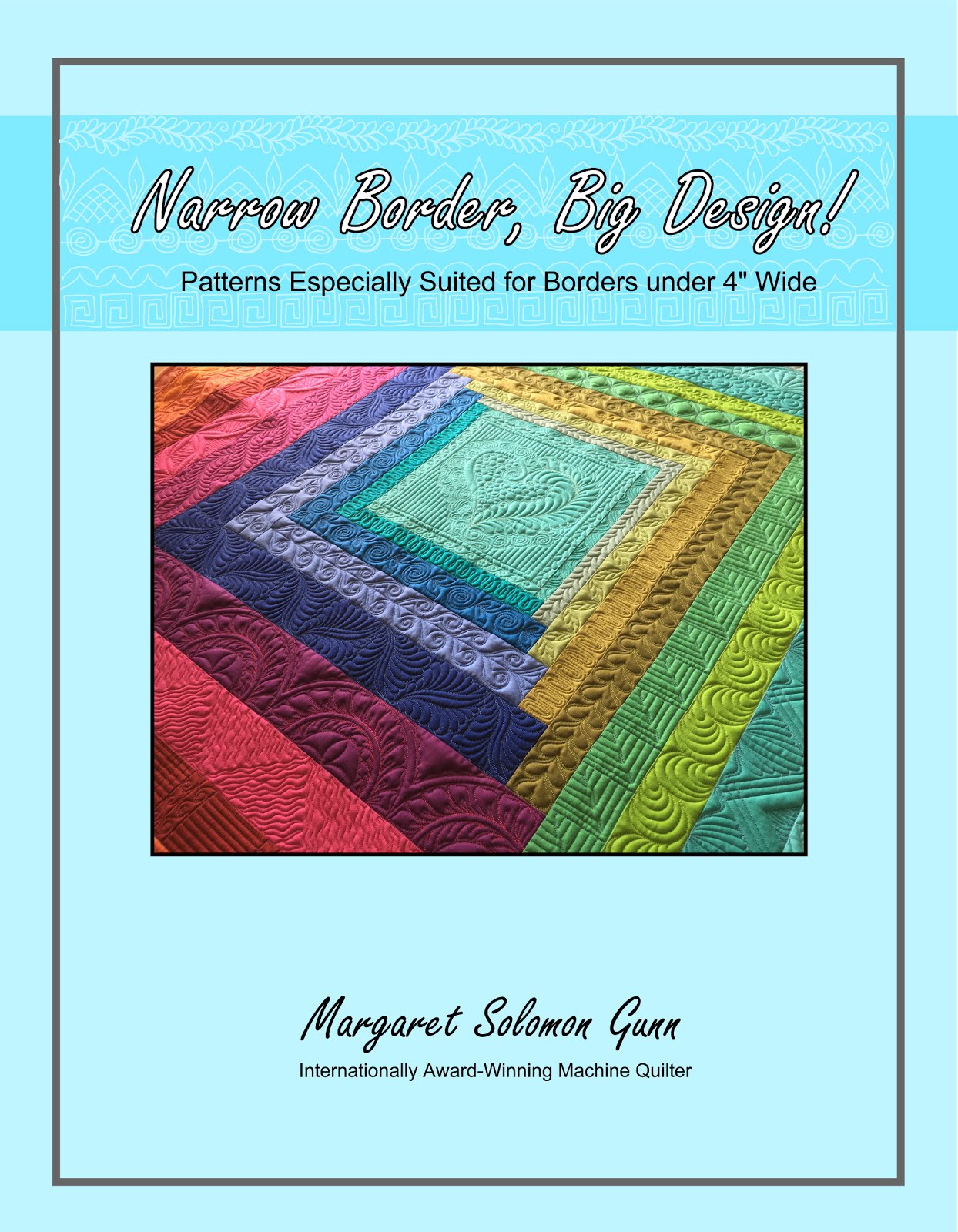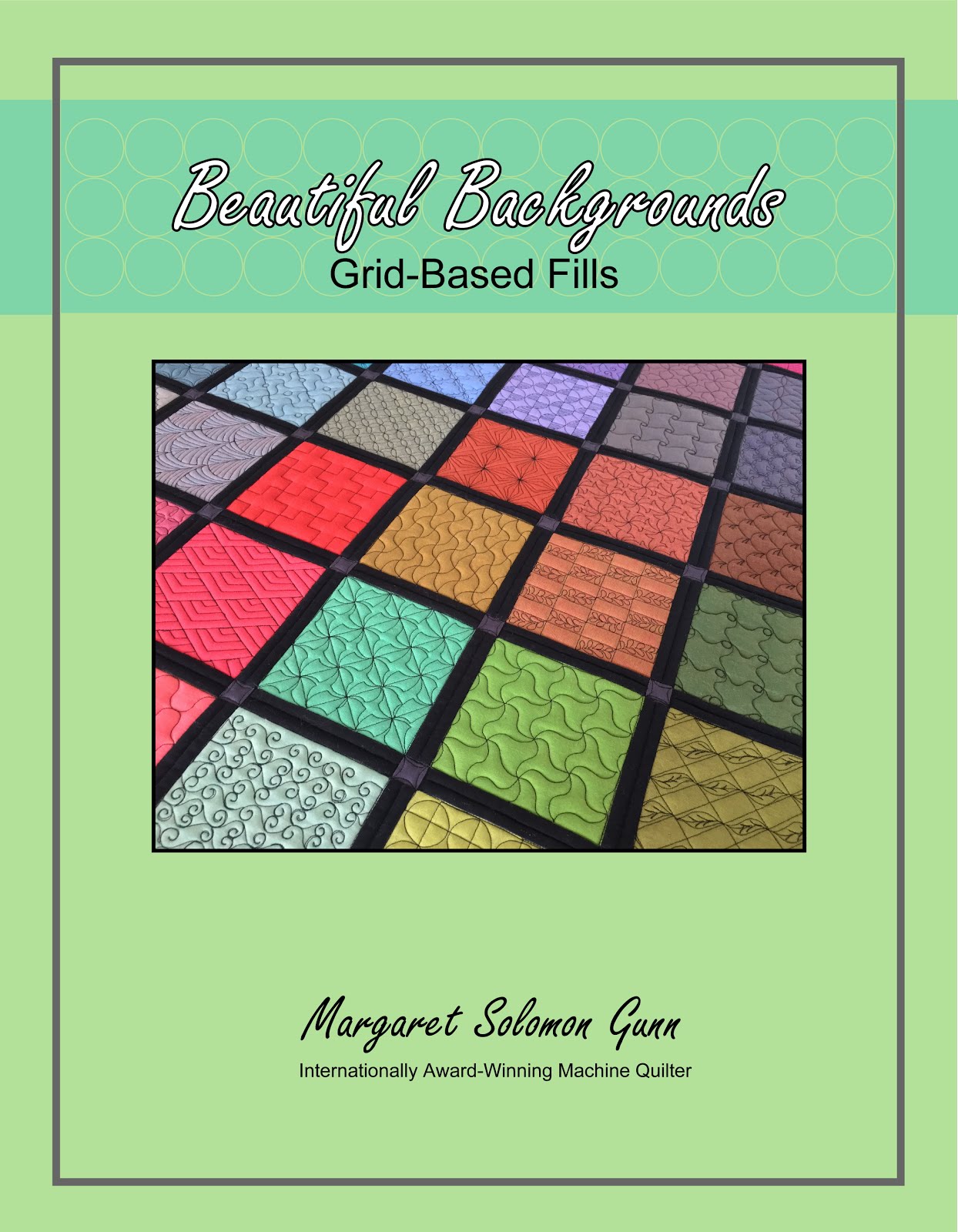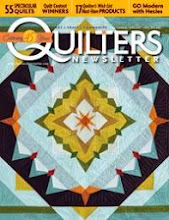This week I quilted Lori Holt's Bee Happy quilt for a local client. It is bright and colorful, and just screaming for spring! This quilt is 72"x80" and has a ton of appliqued elements. While not every quilt needs to receive over-the-top custom quilting, I have a really hard time simply putting an edge-to-edge across designs like this, even when the client's budget may lean more towards that type of quilting. I knew that the budget was aggressive, but my goal was to optimize what she had hand appliqued to the best of my ability.
The quilt has just a single Hobbs 80/20 batt. Though wool would be my batting of choice for any applique quilt, the cotton is perfect for those everyday, high-use quilts. It is also a cost-conscience choice that many quilters make. In the end, how it is quilted will determine how much loft the appliques get too.I chose a workhorse thread - white Superior Magnifico. This 40wt thread is one of three like this (YLI polished poly and Filtec's Glide are the other two) that I routinely use. What color I ultimately need determines which thread is used usually. This thread runs beautifully and rarely causes issues -- a plus when excess time to fuss with picky threads is not in the budget. Additionally, it gives the quilt a subtle sheen.
Anybody who follows my blog for very long knows I don't often stipple. I can't say I am a huge fan of it, nor do I find it overly attractive. I teach a class and wrote a book (Dense & Dainty) all about freehand fills that could be used largely in place of stippling. What I will say is that stippling has its place. Many of the fills in the book are time-consuming because they are denser. The other driving force on this quilt is that all of the background fabrics have a print that will greatly obscure whatever pattern the background is quilted with. I weight that factor considerably when choosing a fill to stitch. If you go to the time to quilt it, it ought to show. Stippling enables decent "flattening" of the background, which in turn allows the appliques to pop.
Some of the other areas on the quilt such as the churn dash and pinwheel blocks were quilted differently so that they show off. This just gives the top variety. It also allows the simple linear quilting of the sashing and outer border to show more. Both of these relatively simple linear treatments provide nice variety, and are actually time efficient to quilt too. I like them.
By going simple on the background for the reasons I described, I was left with enough time to ensure that all appliques were appropriately ditch quilted. This gives each applique clean definition, which I feel is important on this type quilt. I also added some detail quilting (using clear thread) on areas like the chicken wings, center hexagons, and other appliques upon appliques.
I should note one last thing. This particular quilt has numerous embellishments, mostly buttons of differing sizes. If you are making the quilt and will send it to a quilter, wait and attach the buttons after it is quilted. They make it hard for the quilter to get the hopping foot close in some areas. I also inadvertently knocked off a button too. This is risky because it could have damaged the fabric. I was lucky in that it will only require reattaching the button. This is just my simple two cents advice from actually quilting several quilts with buttons.
The quilt made it home to it's owner yesterday, and she was delighted with the result. That always makes me happy!












3 comments:
I always learn something from your posts. Thank you for taking the time to show us this quilt. It’s beautiful, the quilting really enhances it, and your explanations make good sense.
What an adorable quilt! great quilting on a budget too!
The appliqué is the star of this quilt and you made it shine! Such a lovely job and worked within the client's budget too. I'd say you went the extra mile. Well done!
Post a Comment